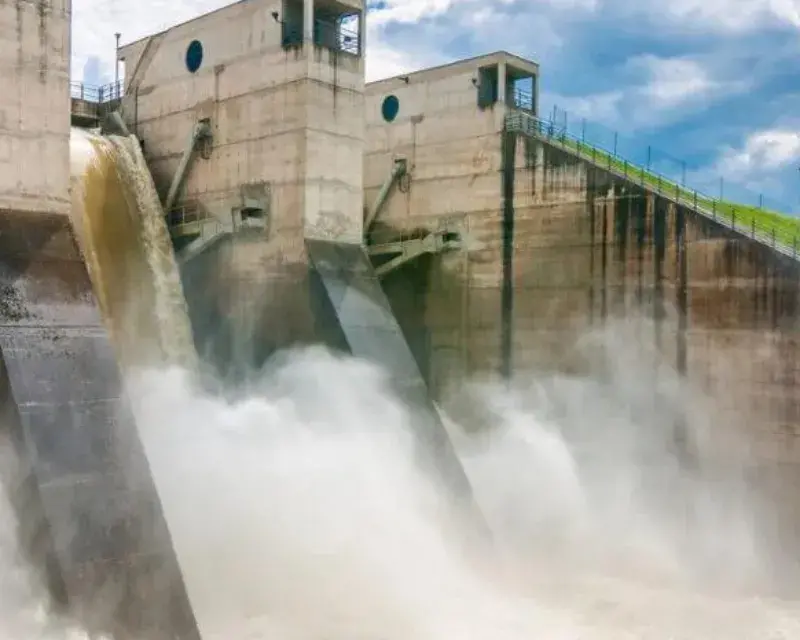Water is a fundamental element that shapes our landscapes and supports vital ecosystems, but managing it effectively requires a deep understanding of hydraulic principles and advanced engineering techniques. The design and consultation process for hydraulics and dams is complex, involving multiple disciplines and a thorough grasp of fluid dynamics. This comprehensive guide delves into the science of water through the lens of engineering, offering valuable insights into the design and consultation process for hydraulic systems and dam projects.
Understanding Hydraulics: The Foundation of Water Management
Hydraulics is the branch of science and engineering concerned with the behavior of fluids, particularly water, under various forces and conditions. It is crucial for designing systems that manage water flow efficiently and safely. Key aspects include:
1. Fluid Dynamics:
– The study of fluid movement and behavior, including how water flows through pipes, channels, and natural bodies of water.
2. Pressure and Flow Calculation:
– Determining how pressure changes affect water flow and vice versa, essential for designing efficient hydraulic systems.
3. Energy Loss Analysis:
– Assessing how energy is lost due to friction and turbulence in hydraulic systems, which impacts overall efficiency.
4. Hydraulic Modeling:
– Using mathematical models and simulations to predict how water will behave in different scenarios, aiding in the design and optimization of hydraulic systems.
The Role of Dam Design in Water Management
Dams are critical infrastructure for managing water resources, providing flood control, irrigation, hydroelectric power, and recreational opportunities. Effective dam design requires a thorough understanding of hydraulic principles and engineering practices:
1. Site Analysis and Feasibility:
– Evaluating potential dam sites based on geological, hydrological, and environmental factors to ensure stability and effectiveness.
2. Hydrological Assessment:
– Analyzing rainfall patterns, river flow rates, and watershed characteristics to design a dam that can handle varying water volumes and conditions.
3. Structural Design:
– Creating a robust dam structure that can withstand water pressure, seismic activity, and other environmental forces. This includes designing spillways, embankments, and other critical components.
4. Environmental Impact:
– Assessing and mitigating the impact of dam construction on local ecosystems and communities. This involves careful planning to balance water management needs with environmental preservation.
5. Safety and Maintenance:
– Implementing safety measures to protect against potential dam failures and designing maintenance protocols to ensure the dam’s long-term functionality.
Engineering Consultation: A Comprehensive Approach to Hydraulics and Dam Design
Engineering consultation plays a crucial role in optimizing hydraulic systems and dam projects. Consultants bring expertise and experience to the table, ensuring that projects are designed and executed to meet high standards of efficiency, safety, and sustainability.
Key Consultation Services
1. Pre-Design Assessment:
– Conducting preliminary studies and analyses to understand the project requirements and constraints. This includes site evaluations, feasibility studies, and risk assessments.
2. Design Optimization:
– Utilizing advanced hydraulic models and simulations to refine designs and enhance performance. Consultants work to optimize flow rates, minimize energy losses, and ensure structural integrity.
3. Regulatory Compliance:
– Ensuring that designs meet local, national, and international regulations and standards. This includes obtaining necessary permits and approvals.
4. Project Management:
– Overseeing the project from design through construction, ensuring that timelines, budgets, and quality standards are met.
5. Risk Management:
– Identifying potential risks and developing strategies to mitigate them. This includes designing safety features and contingency plans.
6. Post-Construction Support:
– Providing ongoing support and maintenance recommendations to ensure the continued efficiency and safety of the hydraulic systems and dam structures.
Case Study: Hydraulic and Dam Design in the UAE
In the UAE, where water management is crucial due to the arid climate, engineering consultation for hydraulics and dam design is particularly significant. A notable example is the design and consultation for the Al Wathba Wetland Reserve’s water management system.
Project Overview
The Al Wathba Wetland Reserve required a sophisticated hydraulic system to manage water levels and support the local ecosystem. The project involved:
1. Detailed Site Analysis:
– Conducting extensive studies of the wetland’s hydrological patterns and soil conditions.
2. Advanced Hydraulic Modeling:
– Using state-of-the-art simulations to predict water flow and optimize system design.
3. Innovative Dam Design:
– Designing a series of small dams and weirs to control water levels and support wildlife habitats.
4. Sustainability and Environmental Impact:
– Implementing eco-friendly practices to minimize environmental impact and enhance the wetland’s ecological value.
5. Ongoing Monitoring and Maintenance:
– Establishing a comprehensive monitoring system to track water quality and system performance.
Conclusion
The science of water, encompassing hydraulics and dam design, is a complex field that requires expertise and precision. Engineering consultation provides valuable insights and solutions for optimizing hydraulic systems and designing effective dam projects. By understanding the principles of fluid dynamics, structural design, and environmental impact, engineers can create systems that manage water efficiently while safeguarding ecosystems and communities. The case study of the Al Wathba Wetland Reserve highlights the critical role of engineering consultation in achieving these goals, demonstrating the importance of innovation and expertise in water management.






